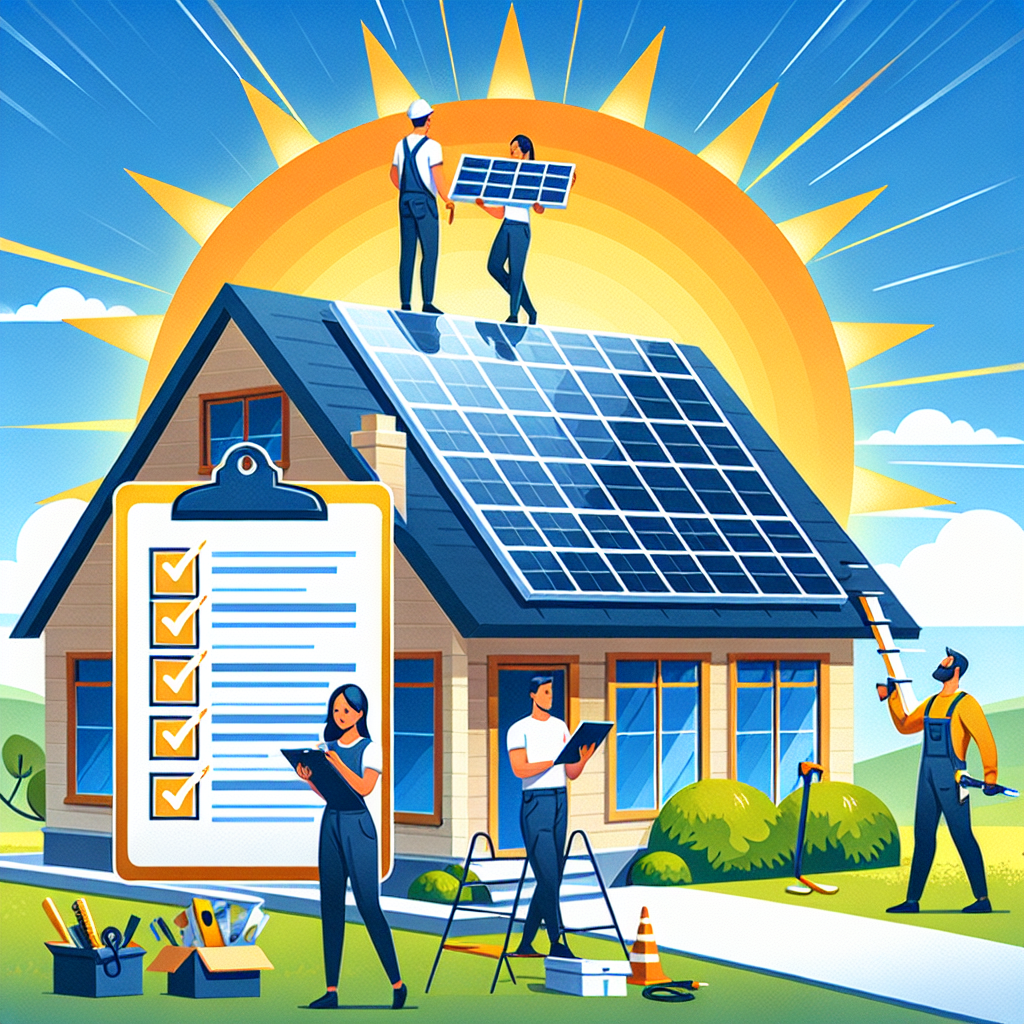Installing solar panels is a significant step towards embracing renewable energy, reducing your carbon footprint, and saving on energy bills. However, the process can seem daunting, especially for those new to the world of solar energy. To help guide you through this journey, we’ve compiled an essential checklist for solar panel installation.
Why Choose Solar Energy?
Before diving into the installation process, let’s explore why solar energy is gaining popularity. Solar energy is renewable, sustainable, and can significantly reduce your electricity bills. Additionally, it adds value to your home and contributes to a cleaner environment—something we all care about. As you consider making the switch, ensuring you have the right information is vital.
Assessing Your Property
Evaluating Roof Conditions
The first step in your solar journey is to take a close look at your roof. Is it in good condition? Solar panels have a lifespan of 25 years or more, so make sure your roof won’t need repairs or replacement shortly after installation. If your roof is aging or damaged, it’s crucial to address these issues first.
Sunlight Exposure
Next, assess your property for sunlight exposure. Ideally, your roof should face south and receive unobstructed sunlight for most of the day. If your roof is shaded by trees or nearby buildings, it may affect the efficiency of your solar panels. A solar professional can conduct a shading analysis to determine the best system for your situation.
Choosing the Right Solar Panels
Types of Solar Panels
There are mainly three types of solar panels to consider: monocrystalline, polycrystalline, and thin-film panels. Monocrystalline panels are known for their high efficiency and sleek aesthetics, while polycrystalline panels tend to be more cost-effective. Thin-film panels are lighter and more flexible but often less efficient. Understand the pros and cons of each type to make an informed decision.
Quality and Warranty
Investing in quality solar panels is essential. Look for panels with a good efficiency rating and a robust warranty (usually 25 years). Established brands may offer better coverage and performance assurance, providing peace of mind for your investment.
Finding a Reliable Installer
Research Local Installers
Finding a trustworthy solar installer is crucial. Ask for recommendations from friends or family, check online reviews, and ensure the installer is licensed and insured. Take the time to interview multiple companies and ask questions about their experience, certifications, and processes.
Get Multiple Quotes
To ensure you’re getting the best deal, it’s wise to obtain quotes from several installers. This allows you to compare prices and included services, ensuring you receive fair and competitive pricing.
Understanding Local Incentives and Financing Options
Government Incentives
Many regions offer tax credits, rebates, or other incentives for solar panel installation. Investigate what’s available in your area, as these incentives can help significantly reduce your installation costs. The federal solar tax credit, for example, allows you to deduct a portion of your solar installation costs from your federal taxes.
Financing Solutions
Consider your financing options carefully. Many solar companies offer leases, loans, or power purchase agreements (PPAs). Each financing option comes with its own set of advantages and responsibilities, so ensure you choose one that aligns with your financial situation and long-term goals.
Finalizing Installation
Permitting and Paperwork
Before installation can commence, your installer will need to obtain the necessary permits and approvals. This process may vary depending on your location, so be prepared to wait a bit while the installer handles the paperwork.
Installation Day
Installation typically takes one to three days, depending on the size of the system. On installation day, your chosen company will handle everything from mounting the panels to connecting them to your home’s electrical system. Be sure that someone is home to answer any questions or provide access as required.
Post-Installation: Maintenance and Monitoring
System Monitoring
Once your solar panels are installed, it’s essential to monitor their performance regularly. Many systems come with monitoring apps that allow you to track energy production. This data can help you identify any issues and ensure your system operates at peak performance.
Scheduled Maintenance
While solar panels generally require little maintenance, it’s wise to schedule periodic inspections. Remove debris and check for any obstructions that could reduce efficiency, such as overhanging branches or dirt accumulation.
Conclusion: Embrace Your Solar Future
By following this essential checklist for solar panel installation, you can take confident steps towards harnessing the power of solar energy. With proper research, planning, and professional help, transitioning to solar power will not only benefit you financially but also contribute positively to the planet. Are you ready to make the switch? The sun is waiting to provide you with clean, green energy!


